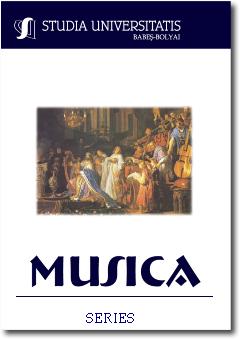MOZART’S MINUET
MOZART’S MINUET
Author(s): Ecaterina BanciuSubject(s): Music
Published by: Studia Universitatis Babes-Bolyai
Keywords: minuet; Menuetto; Mozart; opera; chamber music.
Summary/Abstract: Wolfgang Amadeus Mozart (1756-1791) composed his first minuet to his parents on 16 December 1761, before he was 5 years old. Following the historical evolution of the chamber genre, we notice the interest of the composers in adopting the minuet within the cycle and adapting it to a certain period or style. The minuet was probably the first dance included in the Italian symphonies in the beginning of the 18th century. Domenico Scarlatti for example, ends his opera overtures with a movement called „Tempo di menuetto” (in Narciso) using the binary form made up of two eight measure periods. In Mozart’s work, the minuet can be found in the symphonic genre, in concerts, in opera and in the chamber music. The number of minuets in Mozart’s symphonic works is remarkable: almost thirty of his symphonies have a minuet in the third part. Mozart will dedicate the Simfonie Menuett K.409 in C major to this dance (1782). Regarding the affectus of Mozart’s minuet, we ascertain the following: the minuet appears as an independent piece or as part of a cycle. The aspects of the tempo are implied tempo, Tempo di Menuetto, Moderato, Allegretto or Allegro. Indications referring to character appear: Menuetto-galante, Menuetto Maestoso On conclusion, the initial simplicity of the phrase and harmony allowed a series of innovations required by the aesthetics of the Rococo: harmonic and tonal contrasts, the infiltration of new ternary styles and the counterpoint writing.
Journal: Studia Universitatis Babes-Bolyai - Musica
- Issue Year: 56/2011
- Issue No: 1
- Page Range: 165-197
- Page Count: 33
- Language: English

